︎ INTERVIEW: GORDON BERGER
In the basement of The Lever Gallery, away from the noise of
the bustling group exhibition ‘Untitled (Close To Now)’, organised by The Curation Society London, Cortex sat down with
GORDON BERGER, an artist devoted to testing art and technology's
co-existence in symbiotic relationships. Art is constantly evolving and developing
into areas we can’t quite comprehend yet, especially with the rise of the
digital age and our ever-growing, fast-paced generation. The relevance of art
presented in traditional circumstances has never been so fragile.
However,
Gordon Berger explains why art is not under threat; with the development of
new technology, creatives will thrive. The contemporary artist explores how art
is affected by the internet, social media and blockchain technology.
Berger,
born in Vancouver, Canada, has had his work exhibited internationally, and most recently he was part of a group exhibition project at Tate Modern. In
2014 the Ministry of Art and Culture of Serbia chose Gordon to join a newly
created program for the most promising young artists. Gordon has since settled
in London, where he is graduating at Central Saint Martins.
What were your first experiences with art like?
When you look at the videos from when I was a child, my brother is just running around breaking stuff and in every single video I am drawing, painting or making something out of clay. I always had an instinct to just create something. My skills slowly developed and when I was 12 I started doing graffiti art…you don’t have to mention that in the interview *laughs*.
At what point did your interest in art develop into something you wanted to pursue as a career?
That happened when I got in to the Belgrade School of Design, where I got a traditional art education. It was highly intense training and I learned all of the old master techniques. But there was no contemporary art. That is very important to note because it was everything until modernism. Towards the end of my studies I started to actually get in touch with my personal style and expression. I realised the best place to push my practice further was in London. So that’s what led me to Central Saint Martins.
What was the most valuable advice you received?
Early on, when I realised I was passionate about contemporary art, I asked one of my mentors, “for you, what is great contemporary art?” And he said, “great contemporary art for me is art that perfectly shows our current output, as a human race, socially, politically or technologically”. That was like a little seed that was dropped in me and started growing.
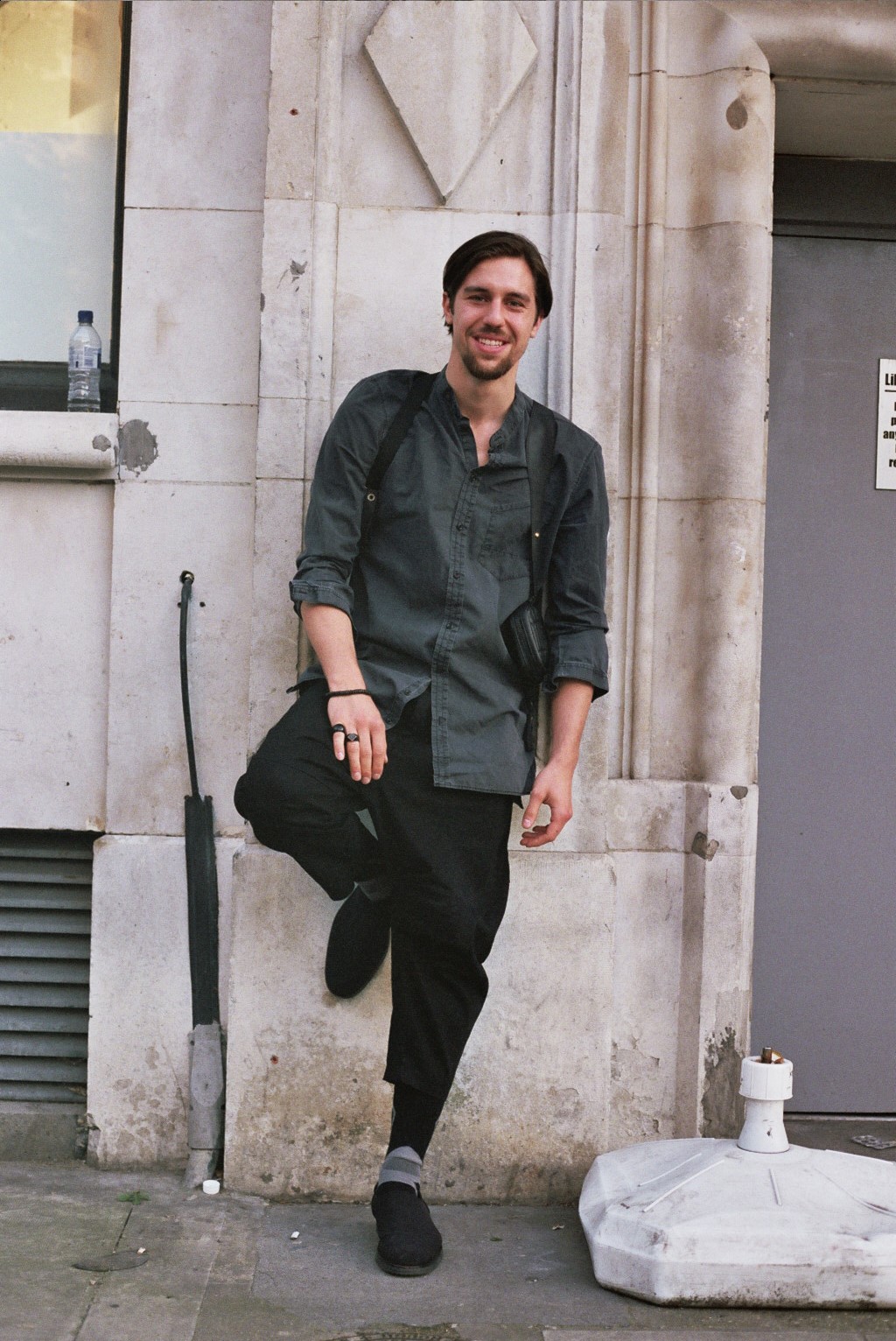
I can clearly see how you respond to the current social climate in your work, particularly regarding technology. Can you explain how this link was found?
I was interested in investigating the ways in which we communicate online. This led to a painting series titled ‘Emoji Paintings’. All the elements in the paintings were composed out of emojis. These symbols represent globalization in a sense of communication across the world with one recognisable visual language. That led me to connect something that’s digital with painting.
However, before I even finished the paintings, some of the emojis I used were already changed, due to Apple IOS constant updates. In one day, all the canvases I was working on were outdated because the emojis I had on them were totally changed *laughs*. That experience made me aware of the speed that things are evolving.
Can you tell me what you are currently interested in exploring?
I am interested in how virtual global networks such as the internet, social media and more recently blockchain technology affect artistic production and distribution of one’s practice. Also exploring the symbiotic relationships between painting as a medium and its fusion into digital culture and vice versa.
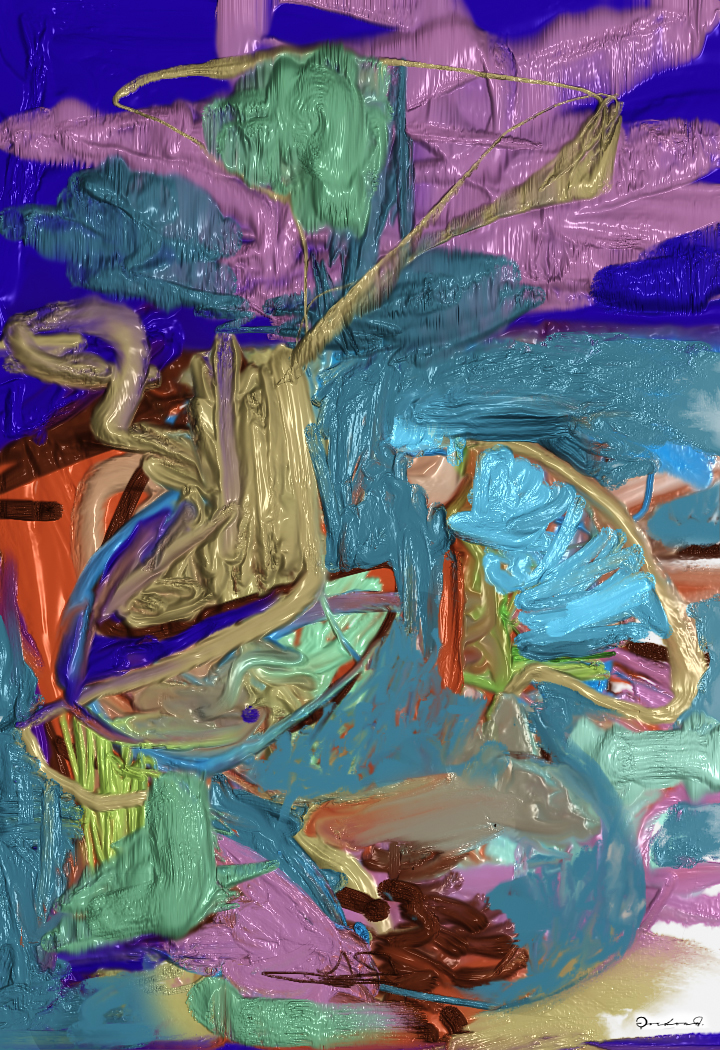
You founded a Blockchain Mining Company in 2013 while you were still in the Art Academy. Can you explain how that happened?
I was introduced to Blockchain technology in 2012 by my best friend, who was a hacker. Almost nobody knew what it was at the time, so I had to search through forums and websites to learn more about it. The more I learned the more I became fascinated and realised the potential this technology had to change the digital world. I became interested in what are the applications of Blockchain in various industries and how can it be used by creatives.
So, how did that experience affect your art practice?
Once I moved to London I figured out that I had these two contrasting passions; on one hand I was obsessed with painting and creating physical artworks, whilst on the other hand I had this love and fascination for new technologies, networks and the digital “immaterial” world. So naturally I started to merge these two opposing interests in my practice. I also started experimenting with digital arts, especially digital painting.
Would you say there is a particular concept which you are drawn to currently?
I read this interesting essay by David Joselit, ‘Painting Beside Itself’. He wrote about why you
can’t look at a single artwork anymore as isolated from the world. It is part of a network surrounding a greater context. The main point he makes is how an artwork is inseperable from the network it is made in. I guess I became interested in how contemporary networks affect art.
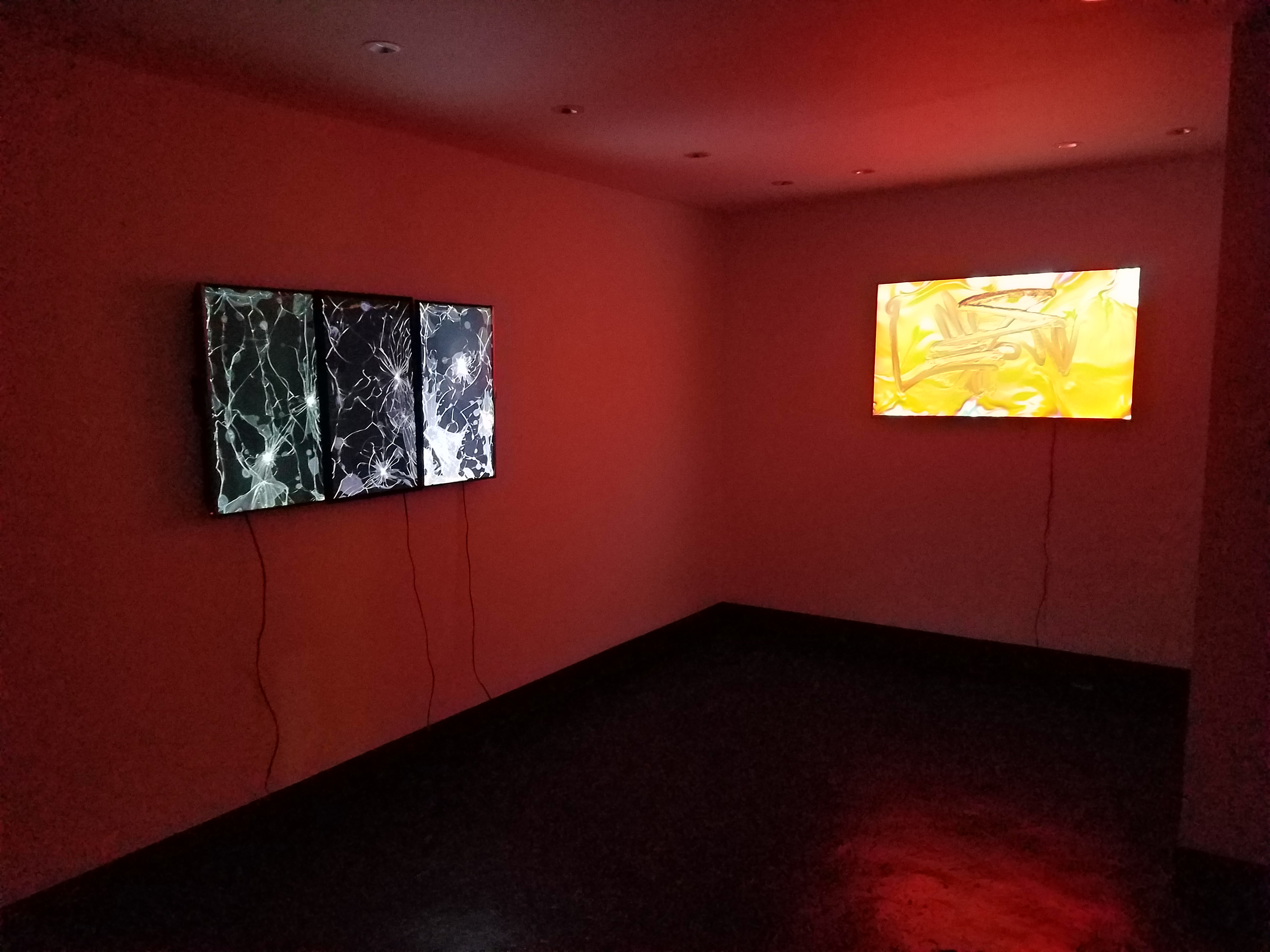
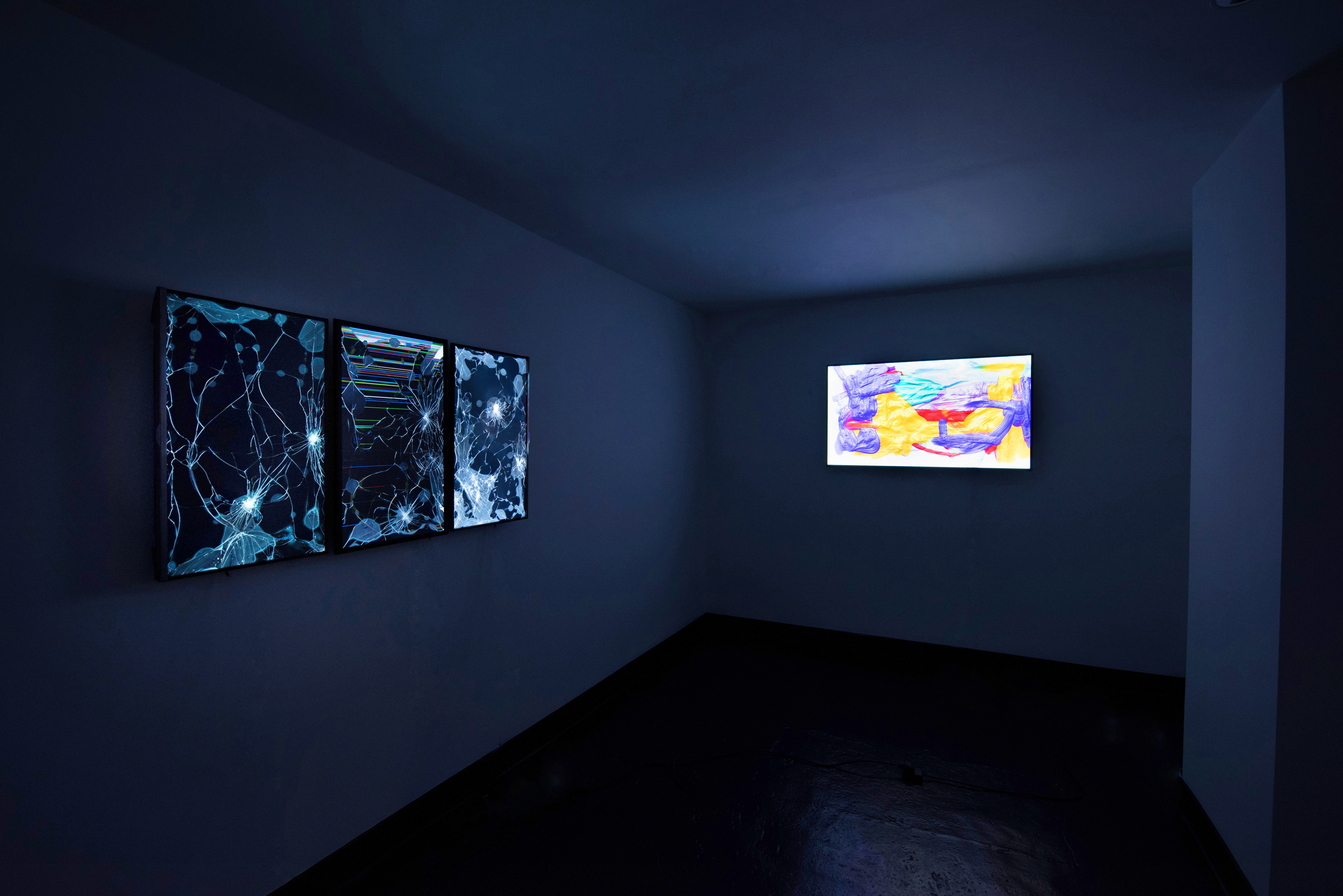
Are there any other topics or questions that you are inspired to explore within your artwork?
In my latest work, I intend to explore the conditions in which we encounter materiality within the digital. I am also thinking about what the role of painting is in today’s technological society? What does it mean to be an artist today? What new hybrid art forms occupy the cultural space?...
It must be a very different experience as a painter today compared to in the past?
Totally. If you think about it, in the past we didn’t have screens. This changed how we perceived images or paintings and how we value them. However, I feel with the emergence of new technology, we can push many mediums to the next level.
Screens are very relevant in our daily life. That is why I felt very drawn to the Screen Artworks you have exhibited upstairs. How did your incorporation of them begin?
I was thinking about our essential daily engagement with technology which led to a series of hybrid artworks in which I have fused conventional canvas with digital screens.
So, you’re blurring the lines between the physical and the digital?
The consumption and distribution of most forms of art is screen-based today anyway. I wanted to question the conventional relationship with the screen and the way we perceive the imaginary constructs of a digital realm and the real world.

Would you say artworks are being recasted within a digital rather than an analogue context?
The physicality of the piece is emphasized, being between something that is sculptural and painterly. However, the viewer is inevitably drawn back to the seductive bright light in the background of the screen, representing digital reality. This creates a constant push and pull with our attention... re-configuring our relationship and understanding what is ‘real’ and tactile.
Many new platforms have come into our lives in the last decade and it’s astonishing how quickly they become outdated. What will Blockchain provide that will assure its longevity?
To put it simply, Blockchain is a new layer over the internet (3.0) that allows something that is purely digital to have value and to be ‘unique’ without having to use any intermediary company to verify it. This is not possible on the internet today. So, you can imagine it as a sort of update to the internet. Since it is in its early days I think it’s really beneficial that diverse people and artists use this technology and explore, shape and change it.
Could you tell me a simple example that illustrates the concept of how something digital can have value?
There is an example I used recently in my TED Talk. I asked the viewers, what happens if I send you a photo through WhatsApp? From my gallery it gets sent to my WhatsApp and then it arives to your WhatsApp account from where it gets saved to your gallery. So, in one transaction of a single photo, we have four copies of it. Most importantly, none of the copies can be identified as the original one. Now if we were to use the Blockchain, the photo would leave my account, get verified and then arrive to your account. There are no copies in that process. You know exactly who the owner of that photo is, so it preserves its value.
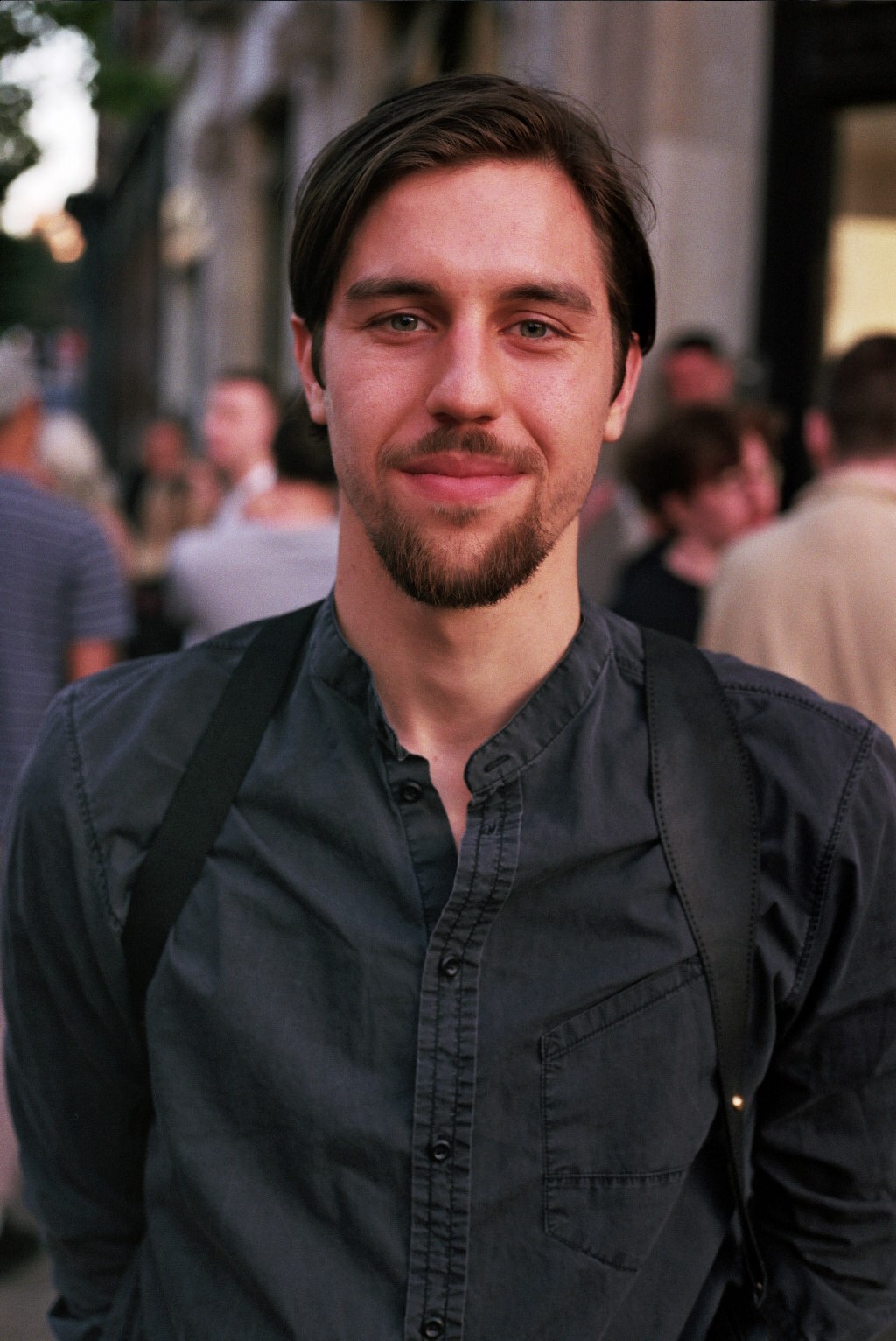
Would you say the way people view art will change considerably in the coming years? Will we still continue to visit galleries and exhibitions due to the rise of technology?
That shift already happened with Instagram, and Instagram proved that people are very interested in seeing art online but also that we are still attracted to seeing art in galleries and physical spaces. I think they will always have a place. If it wasn’t like that, they would already be dead by now. But there will be new virtual marketplaces that will provide the option to collect digital art and have a valid proof of ownership, which will result in pushing the digital medium further.
How would this work because if I own a piece of artwork I want to present it on my wall at home. What do you do with this digital file?
What collectors like to do today is to have one wall-mounted screen that is just for art. There are many companies like Meural that make screens specially designed for digital art. It’s a screen that kind of looks like a framed canvas.
Your digital art collection could even be made visible on your online wallet, so your friends can see what you have in your collection.
Right now, we have our phones in reaching distance, right? It’s the first thing we look at in the morning and the last thing we look at before we go to sleep. The way we interact is changing vastly due to technology.
You kind of met me before you met me, you met my virtual Gordon, Instagram Gordon. Did you feel as though you knew me a bit better when you met me for the first time in person today?
Yeah yeah!
Exactly, see that’s only after a number of years of social media. Imagine now when we are used to all of this hyper-connectivity, what happens in the next ten years? It’s an exciting point in history to be in.
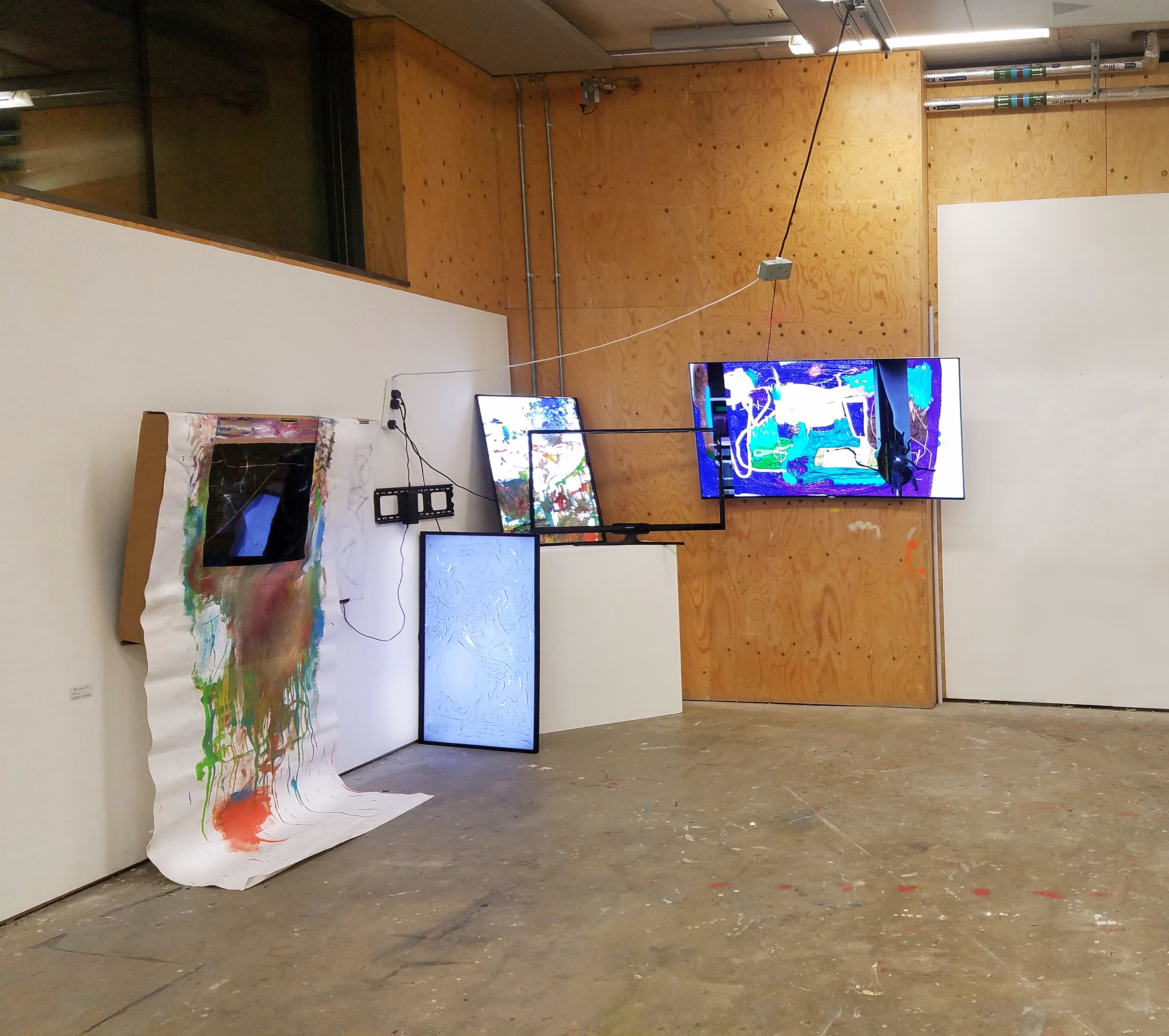
In terms of the creative process, what part of it would you say you enjoy most? And what medium?
I guess my inspiration comes from researching. However, currently what excites me the most is painting digitally, using programs that render digital paint as a 3D object. It is interesting how the operations of a computer software replace the presence of materials. I feel most free within that medium. You can paint a dark colour and then a light colour over it without waiting one day for it to dry. You can’t do that with physical paint. I can create them at the same speed that I function online.
Does your digital work almost allow you to work on the move and free you of these limitations?
Yes, the digital process gives you that extra sense of freedom. It’s like the digital nomads who work on their laptops and travel the world. They’re location independent. So, this is material independent in a way. You don’t need a studio. Although regarding the location I create the digital paintings in the Central Saint Martins computer laboratory because I need strong machines to render some of the digital artworks. Those artworks also influence my physical art...they feed into each other.
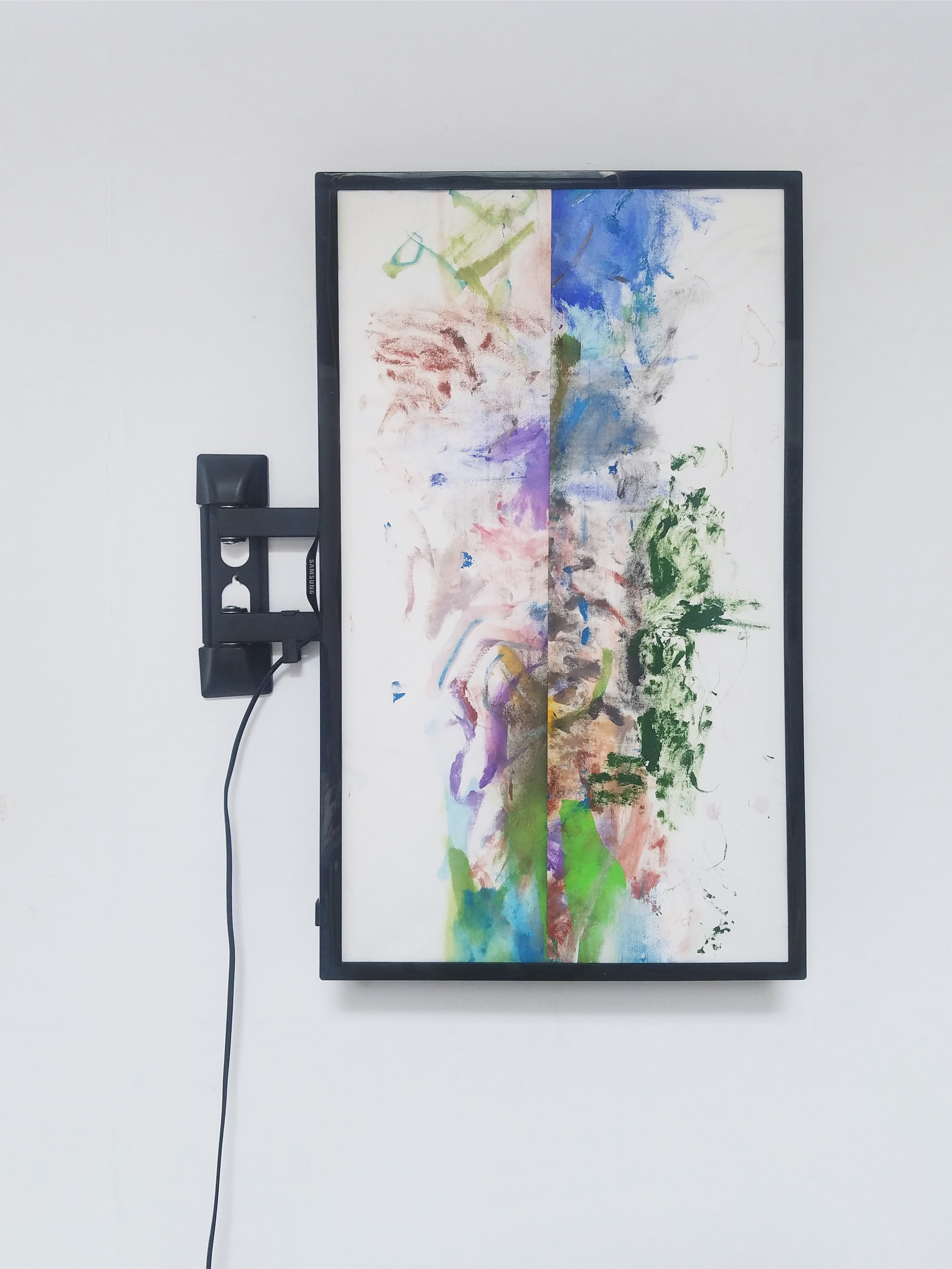
Are there any peers that fascinate you who are pushing art to the same extent to which you are?
Definitely, there are many amazing artists and I am connected with most of them on Instagram. There is this great Instagram artist community that is totally global. Some of them I have never met in person, but we are really good friends online.
If you were to give any advice to Cortex Creatives who are looking to pursue a career in their creative field what would you have to say?
Use Instagram but not just to broadcast yourself, use it to educate yourself in your specific craft. It can inspire you and help you connect with people in your field. Other than that, I would say look into Blockchain *laughs*.
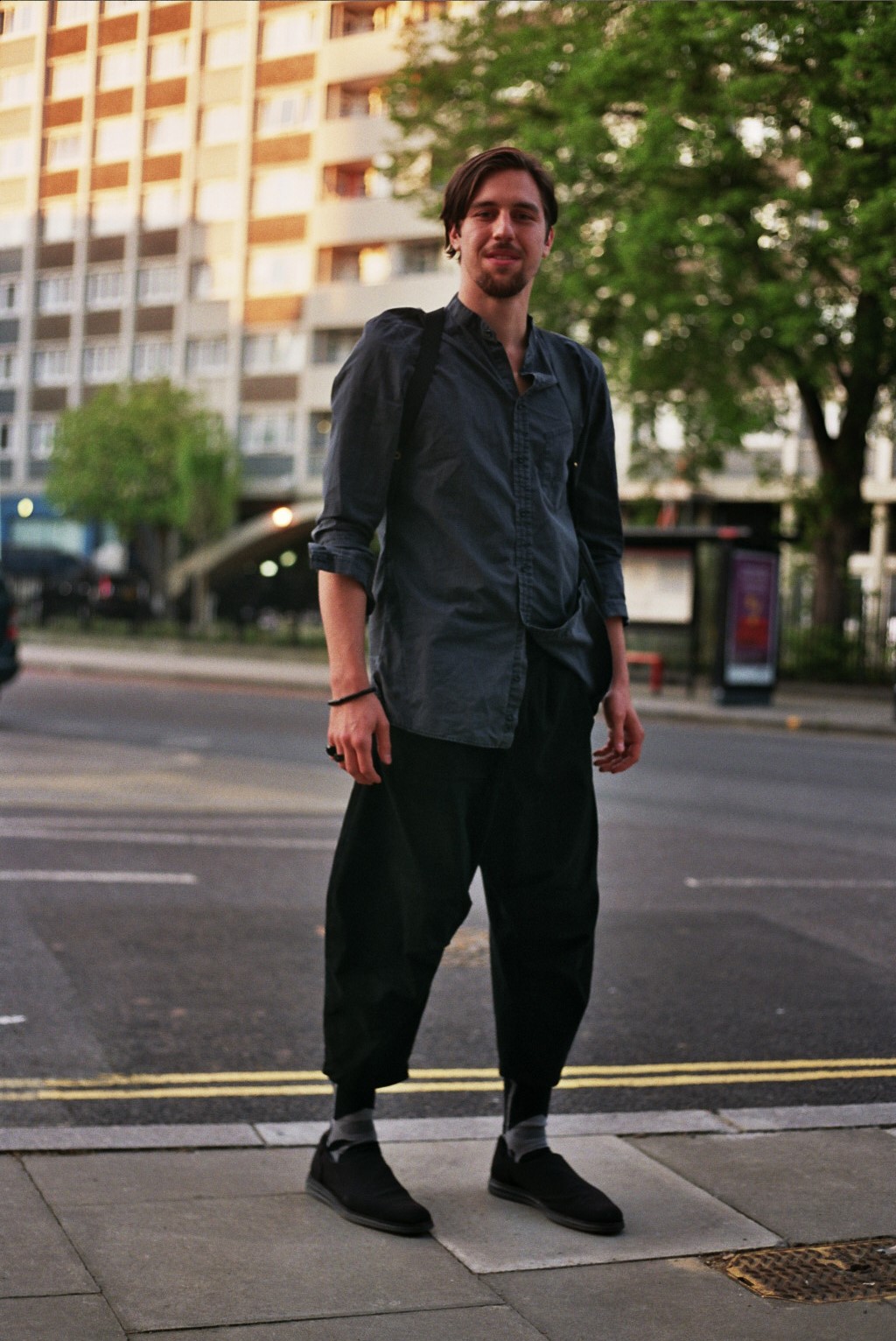
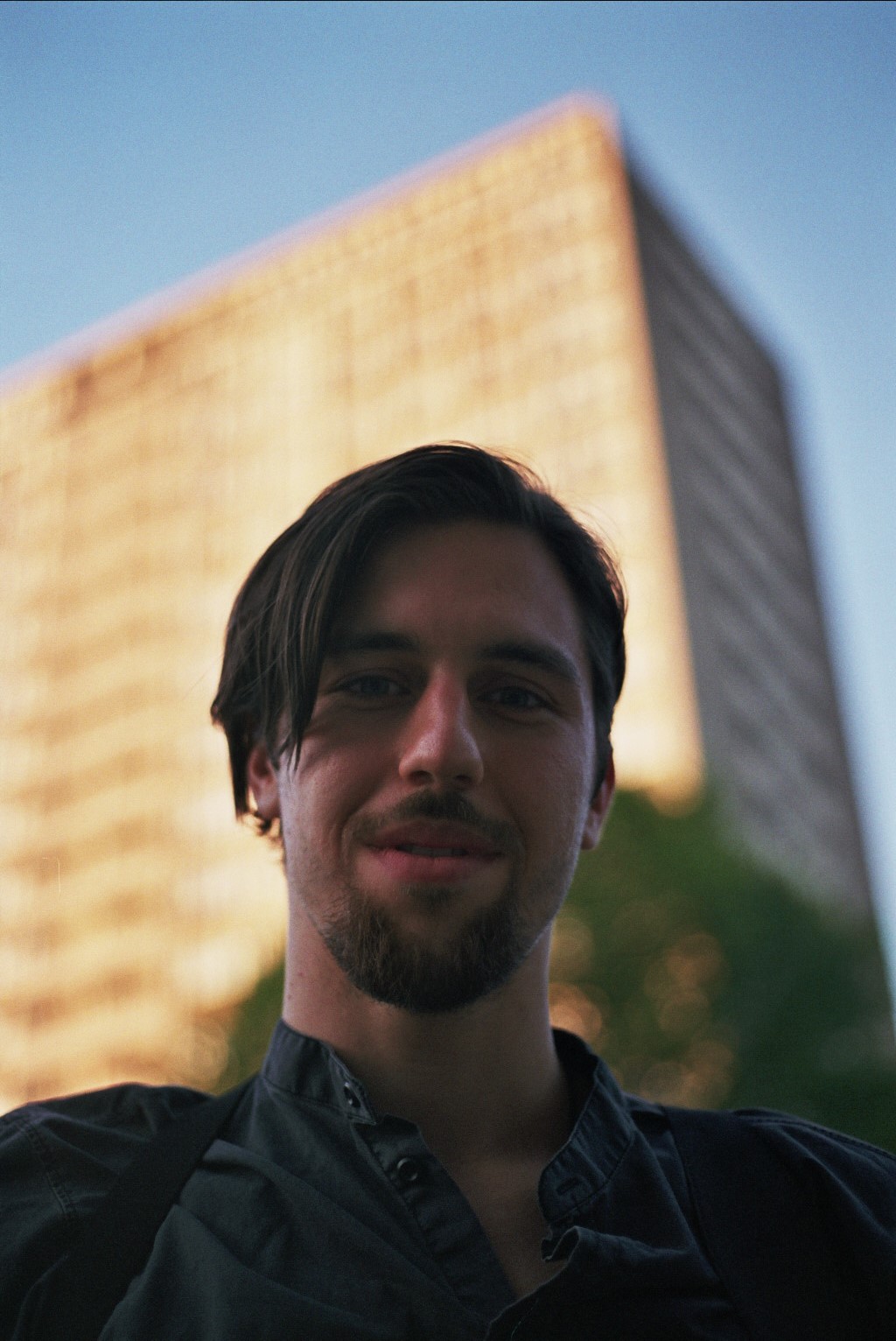

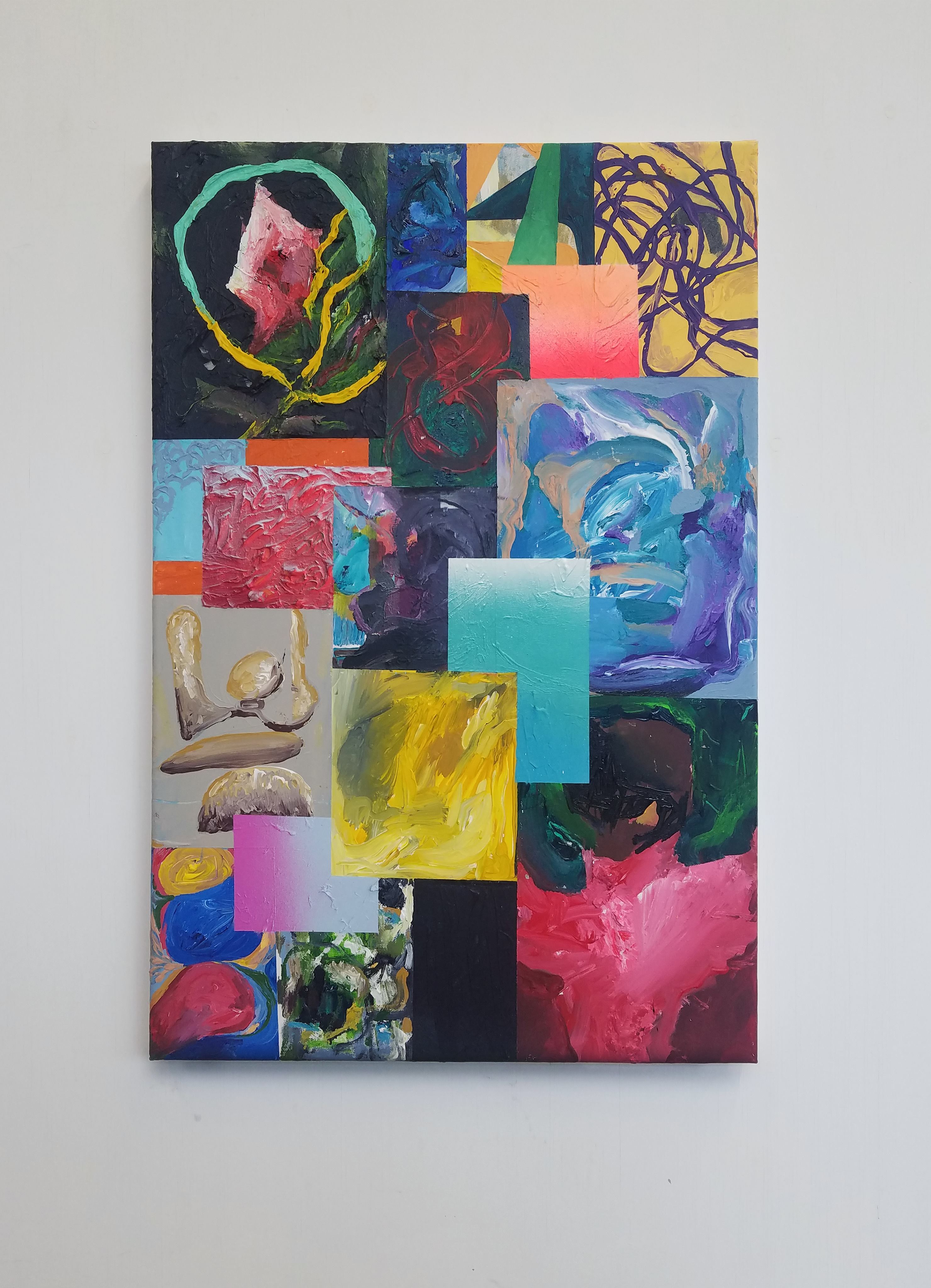
Interviewed & written by MATHEW PRICHARD
Shot by MATHEW PRICHARD
